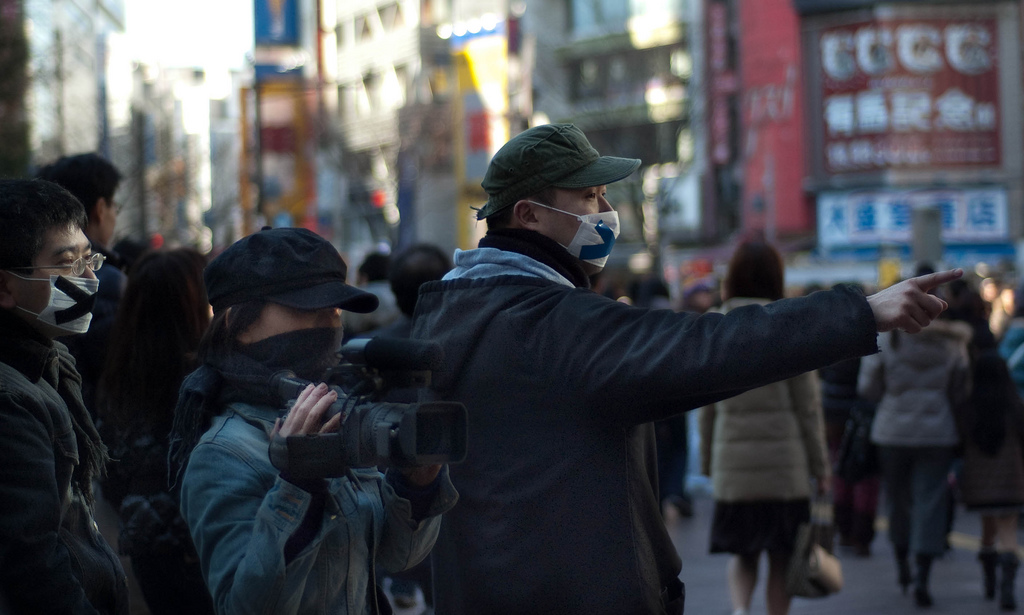Originally published at MintPress News.
AUSTIN, Texas — From the footage of Eric Garner’s death to YouTube videos of Israeli soldiers’ violence against Palestinians, recordings made by everyday people are providing powerful evidence against the actions of police states around the world.
One NGO is harnessing that power and using it against some of the world’s most repressive regimes and dangerous criminals. Videre Est Credere (Latin for “to see is to believe”) provides hidden cameras and specialized training to victims of war crimes and human rights abuses from Africa to Asia.
Oren Yakobovich, CEO of Videre, said the organization’s main goal is to force governments to “protect human rights, or take another kind of action to make people’s lives better. It doesn’t matter how they do it, whether it’s in court or changing legislation.”
He called this practice “sousveillance,” a term originally coined in 2002 by Steve Mann, a computer science researcher. It comes from the French root “sous,” meaning below, to refer to surveillance that turns the tables on the powerful.
Yakobovich offered several examples of the power of sousveillance at a Saturday panel at SXSW Interactive, part of the nine-day music, film and technology conference held here each year. Although he was reluctant to name specific countries in which the NGO operates due to the sensitive nature of his work, he did say that Videre works on cases involving “everything from political intimidation to slavery, trafficking and corruption.”
Speaking to MintPress News, he emphasized that Videre does everything it can to protect the identities of activists or other innocent people who could be harmed by the footage. “There’s a lot of blurry faces,” he said.
Videre also uses robust security to protect collected data, preventing raw video from being misused by the very people and governments they’re targeting, he added.
While the video footage collected by Videre’s training and equipment is later covertly released to the media or used in lawsuits, sometimes just the awareness that sousveillance activists are being trained to record is powerful, too.
“It’s not always about what you’re collecting but what they think you’re collecting,” Yakobovich explained.
He added:
We don’t have the power that the government has to collect everything all the time, so it’s smart to pick what you collect, so you have enough knowledge to create leverage on the government. You want them to believe that you have enough information to embarrass them or take them to court.
During the panel, Yakobovich shared two videos from an earlier project, “Shooting Back,” which he created for the Israeli human rights group B’Tselem to demonstrate sousveillance in action. One showed a group of Palestinians attacked by the Israeli Defense Forces, and another depicted a violent assault by illegal Israeli settlers. Both videos had been secretly shot, and later led to successful court cases against the perpetrators — a rarity in occupied Palestine.
Yakobovich was drawn to human rights’ activism after serving as a soldier in the IDF.
“There was no single terrible incident or atrocity that made him become disillusioned about the Israeli cause or the way the army treated the Arabs,” David James Smith wrote in a 2013 profile of Yakobovich for Wired. “But he became gradually aware that his involvement in day-to-day activities, such as checking men, women and children at checkpoints, was creating more hate, more enemies — and probably more terrorism too.”
“I gradually realized there was something very wrong,” Yakobovich told Smith.
Watch “Shooting Back: The Israeli Human Rights Group B’Tselem Gives Palestinians Video Cameras to Document Life Under Occupation” from Democracy Now!
More: Storify of Tweets from Sousveillance, Surveillance & Body Cameras
https://storify.com/KitOConnell/sxsw2016-sousveillance-surveillance-body-cameras-w
